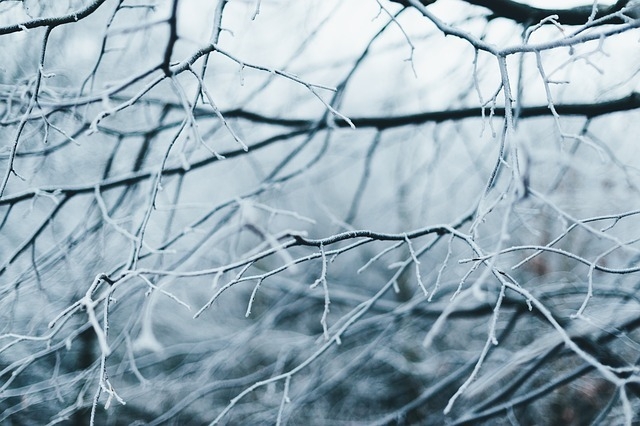The Most Common Types of Winter Tree Damage
Winter is here agin and that means it’s time to start thinking about keeping your trees healthy no matter what the weather throws their way. The best way to do that is to familiarize yourself with the most common types of winter tree damage so you’ll know what to look for and how to better manage it. Here are a few of the most common issues trees experience during the winter months.
Broken Limbs
One of the most common types of damage homeowners discover during the winter months is broken limbs. Heavy snowfall, ice storms, and wind can put strain on the branches and limbs of your trees. Even if the trees are otherwise healthy, they may not be able to withstand the increased weight and strain on the limbs. This can lead to cracks at best and complete breakage at worst. Prune your trees and cut away dead growth before winter is in full swing. This will help reduce the strain on those fragile limbs when the snow piles up.
If you notice broken limbs on your property, contact your tree care specialist as soon as possible. They’ll be able to safely remove them and clean up the injured area of the tree so it can better stave off insect infestations and common plant diseases.
Wind Burn
Though spring is the windiest time of year, it’s not the only time that we see high winds. We still get them in winter and because the temperatures are so cold, the winds can do serious damage to your trees. When the temps are cold enough, that blowing wind can lead to windburn on any pine needles on the tops of your trees or on the most-exposed branches.
Unlike broken limbs, windburn shouldn’t cause long-term damage to your trees. However, it can cause discoloration on the growth that survives the winter.
Salt Damage
It’s common practice to salt sidewalks and driveways during the winter months to help melt ice and make those paved areas safer to walk on. However, that salt can end up really hurting your plants. As the snow and ice melt, the salt gets deposited in the soil around your yard. This can change the pH of the soil and lead to damage to the roots of your trees. This can hurt their growth and, in some instances, lead to premature death.
Instead of letting the salt just wash away, change your ice melt. You’ll want to look for ice melt that is safe for plants. This way, if any does get deposited in the soil, it will lead to less damage.
Keep Your Trees Healthy This Winter
Keeping your trees healthy during the winter months is doable. However, it can take work. As long as you watch for these common signs of damage and make the effort to mitigate your plants’ risk before the weather turns, you’ll be able to keep your trees healthy and thriving. If at any point you’re worried about the way your trees look or you see visible signs of damage, contact Root Tree Service and let our team inspect your trees for damage.
Go Back Broken Limbs
One of the most common types of damage homeowners discover during the winter months is broken limbs. Heavy snowfall, ice storms, and wind can put strain on the branches and limbs of your trees. Even if the trees are otherwise healthy, they may not be able to withstand the increased weight and strain on the limbs. This can lead to cracks at best and complete breakage at worst. Prune your trees and cut away dead growth before winter is in full swing. This will help reduce the strain on those fragile limbs when the snow piles up.
If you notice broken limbs on your property, contact your tree care specialist as soon as possible. They’ll be able to safely remove them and clean up the injured area of the tree so it can better stave off insect infestations and common plant diseases.
Wind Burn
Though spring is the windiest time of year, it’s not the only time that we see high winds. We still get them in winter and because the temperatures are so cold, the winds can do serious damage to your trees. When the temps are cold enough, that blowing wind can lead to windburn on any pine needles on the tops of your trees or on the most-exposed branches.
Unlike broken limbs, windburn shouldn’t cause long-term damage to your trees. However, it can cause discoloration on the growth that survives the winter.
Salt Damage
It’s common practice to salt sidewalks and driveways during the winter months to help melt ice and make those paved areas safer to walk on. However, that salt can end up really hurting your plants. As the snow and ice melt, the salt gets deposited in the soil around your yard. This can change the pH of the soil and lead to damage to the roots of your trees. This can hurt their growth and, in some instances, lead to premature death.
Instead of letting the salt just wash away, change your ice melt. You’ll want to look for ice melt that is safe for plants. This way, if any does get deposited in the soil, it will lead to less damage.
Keep Your Trees Healthy This Winter
Keeping your trees healthy during the winter months is doable. However, it can take work. As long as you watch for these common signs of damage and make the effort to mitigate your plants’ risk before the weather turns, you’ll be able to keep your trees healthy and thriving. If at any point you’re worried about the way your trees look or you see visible signs of damage, contact Root Tree Service and let our team inspect your trees for damage.
